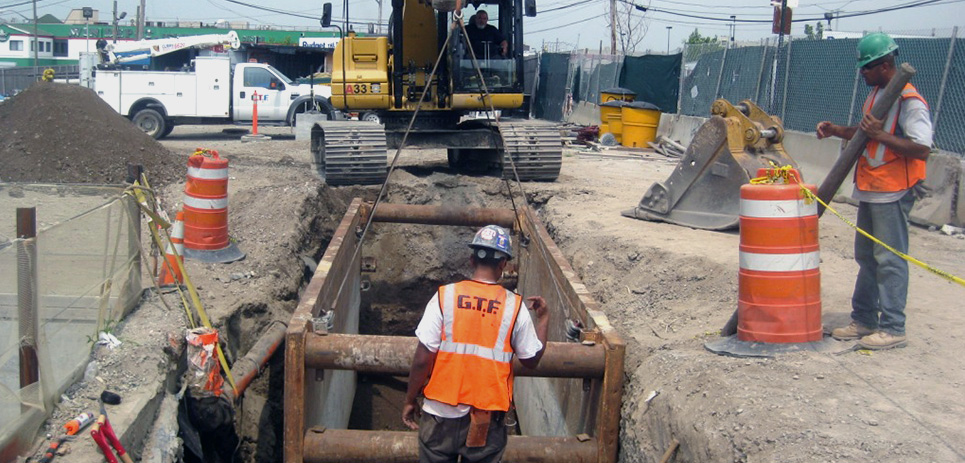Insight
Published and updated
Preventing Trench Collapse and Caught-In Incidents
Trench collapse (or cave-in) and caught-in (or caught-between) incidents occur too often. In 2016, 72 workers perished in caught-in incidents. Between 2000 and 2006, an average of 54 workers per year died in trench collapse incidents. Both are scenarios we all want to avoid. Injuries are usually traumatic and permanent. Fatalities are the stuff of nightmare.
Let’s skip ahead to how to prevent caught-in and cave-in incidents. From a macro perspective, many of the same types of situational awareness and safety culture measures discussed in “How to Prevent Struck-By and Backover Incidents” apply to trench collapse and caught-in incident prevention. It discusses the value of cameras, proximity sensors, communication and gaining buy-in from every worker involved in a project.

Preventing Trench Collapse Incidents
We compiled the following trench collapse prevention tips from OSHA, the National Institute for Occupational Safety and Health (NIOSH) and Safety + Health:
- Unless you’re carving out bedrock, any excavation deeper than five feet requires a protective system designed or pre-approved by a professional engineer.
- Find yourself a “competent person”—someone capable of identifying possible hazards—and have him or her inspect trench conditions daily.
- Trenches four feet or deeper require safe entry and exit measures (ladder, steps, ramp, etc.) within 25 feet of workers.
- Plan ahead to place equipment a safe distance away from the trench opening and locate all utilities.
- Water and soil make mud, so always be extra cautious during and after rainstorms.
- Beware low oxygen and toxic fumes.
- Never assume you have time to move out of the way if a collapse starts.
- Use barricades, gates, cones, protective tape, signs or any other means necessary to ensure everyone close to the worksite knows the trench location.
Preventing Caught-In Incidents
With the help of Equipment World, Safety Toolbox Topics and OSHA, we gathered safety precautions to help prevent caught-in incidents:
- Maintain a safe distance from working equipment. Be extra cautious of swing radii.
- If you have to be near working equipment, always stay in sight of equipment operators. If you can’t maintain line of sight, then pre-plan escape routes before work begins.
- Respect barricades and flagging personnel.
- Watch out for materials being moved. Forklift loads can be wider than the forklift. Crane loads are often overhead and several feet away from the crane itself.
- Make sure machinery is properly maintained, guarded and locked out when not in use.
- “Stay tight,” meaning tie and tuck long hair, avoid jewelry and dress appropriately.
- Always be on the lookout for possible pinch points; not only pinch points within a machine or piece of equipment but also pinch points between equipment and stationary objects or buildings (watch swing radii again).
- Avoid multitasking and distraction when working around machinery.
Keep Your Ears On and Your Eyes Peeled
Time doesn’t stand still on the construction job site, manufacturing plant floor, or the farm. Machinery is used and trenches become longer and deeper. So even when the most steadfast preventive measures are in place, new hazards are constantly revealing themselves. Real-time communication among all workers in the work zone helps identify and fix those hazards before they endanger workers.
It’s important to note that a majority of trench collapse and caught-in incidents occur at smaller companies with fewer than 50 workers. That doesn’t mean that smaller companies are put in more dangerous situations than larger companies. But the statistical fact should inspire you to take more responsibility for your own safety and that of your coworkers if you work for a smaller company.